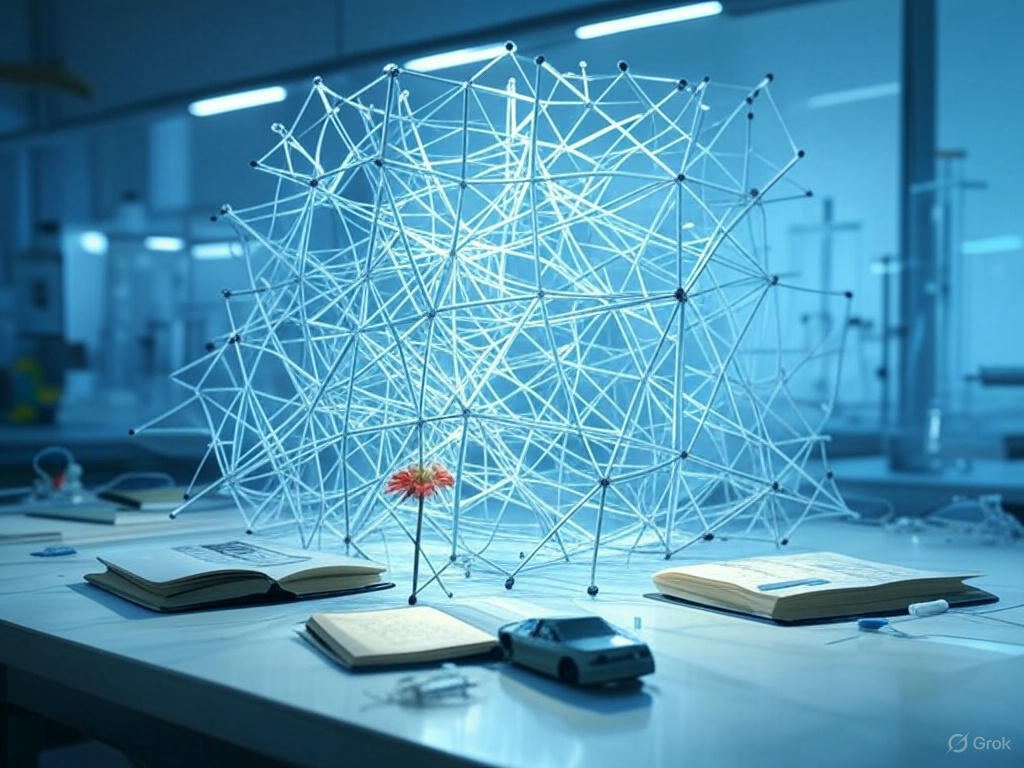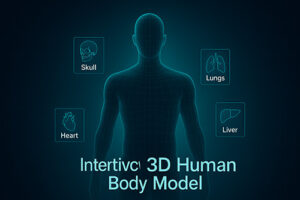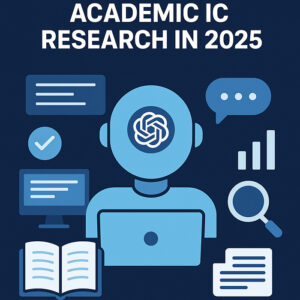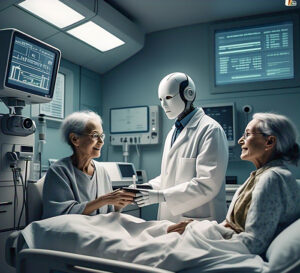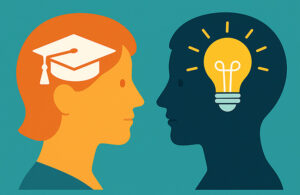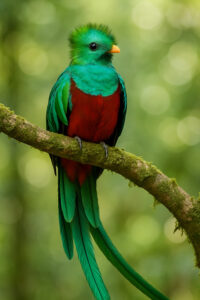Computer Vision: A Comprehensive Guide to Seeing Through Artificial Eyes
Introduction
Computer Vision (CV) represents one of the most transformative applications of artificial intelligence, enabling machines to interpret and understand visual information from the world. This technology attempts to replicate the complex processes of human visual perception, allowing computers to identify objects, recognize patterns, track movements, and extract meaningful information from images and videos. From self-driving cars navigating busy streets to medical imaging systems detecting early signs of disease, computer vision is revolutionizing how we solve problems across virtually every industry.
This comprehensive guide explores the theoretical foundations, key techniques, practical applications, and future directions of computer vision. Whether you’re a researcher, student, industry professional, or simply curious about this fascinating field, this resource provides a thorough understanding of how machines learn to see and interpret the visual world.
Table of Contents
- Fundamentals of Computer Vision
- Historical Development
- Core Computer Vision Tasks
- Image Processing Foundations
- Feature Detection and Extraction
- Neural Networks in Computer Vision
- Convolutional Neural Networks
- Object Detection Frameworks
- Semantic Segmentation
- Instance and Panoptic Segmentation
- Video Analysis and Understanding
- 3D Computer Vision
- Generative Models for Vision
- Self-Supervised Learning in Vision
- Computer Vision Datasets and Benchmarks
- Hardware for Computer Vision
- Real-World Applications
- Ethical Considerations
- Future Directions
- Conclusion
Fundamentals of Computer Vision
Computer vision can be understood as the inverse of computer graphics. While graphics renders 3D models into 2D images, computer vision attempts to reconstruct the three-dimensional world and its properties from 2D images or video sequences. This inverse problem is inherently challenging due to its underconstrained nature – multiple 3D configurations can produce the same 2D image.
The Computer Vision Pipeline
A typical computer vision system proceeds through several stages:
- Image Acquisition: Capturing visual data through cameras, sensors, or retrieving existing images
- Preprocessing: Enhancing image quality through noise reduction, contrast adjustment, and normalization
- Feature Extraction: Identifying distinctive patterns and characteristics within the image
- Detection/Segmentation: Locating objects of interest and distinguishing them from backgrounds
- High-level Processing: Classifying objects, recognizing activities, or interpreting scenes
- Decision Making: Taking actions based on the visual interpretation
Challenges in Computer Vision
Several fundamental challenges make computer vision complex:
Viewpoint Variation: Objects look different from different angles, requiring systems to recognize objects despite viewpoint changes.
Illumination: Lighting conditions drastically affect how objects appear in images.
Occlusion: Objects may be partially hidden behind other objects.
Scale Variation: Objects vary in size both in the real world and in images.
Deformation: Many objects are not rigid and can appear in multiple configurations.
Background Clutter: Objects may blend with complex backgrounds.
Intraclass Variation: Categories contain items with significant differences (e.g., different dog breeds).
As we discussed in our Introduction to AI Perception Systems article, these challenges mirror the complexities that human vision systems have evolved to handle.
For foundational materials on computer vision principles, explore the Computer Vision: Algorithms and Applications by Richard Szeliski, a comprehensive free online resource.
Historical Development
The field of computer vision has evolved significantly since its inception in the 1960s, with several distinct eras marking its progression.
Early Beginnings (1960s-1970s)
Computer vision emerged as a research field when researchers attempted to create systems that could interpret photographs. The MIT AI Lab, under the leadership of Marvin Minsky, assigned a summer project to connect a camera to a computer and have the system describe what it saw – a task that proved far more challenging than anticipated.
Early approaches focused on edge detection, shape analysis, and 3D geometric models. Larry Roberts’ work on extracting 3D information from 2D images laid important groundwork, while David Marr’s influential book “Vision” proposed a framework for understanding visual perception that influenced the field for decades.
Knowledge-Based Era (1980s)
The 1980s saw efforts to incorporate human knowledge and constraints into computer vision systems. Researchers developed expert systems that encoded rules about how objects appear and relate to each other. However, these systems struggled with the flexibility needed for real-world applications.
Feature-Based Approaches (1990s)
The 1990s brought a shift toward statistical methods and feature-based approaches. Algorithms like SIFT (Scale-Invariant Feature Transform) enabled robust feature detection regardless of image scaling, rotation, or translation. During this period, face detection algorithms based on Haar features demonstrated the first real-time performance on standard hardware.
Machine Learning Revolution (2000s)
The 2000s saw increasing integration of machine learning techniques. Support Vector Machines and AdaBoost became popular for object detection and recognition tasks. The influential Histogram of Oriented Gradients (HOG) method, combined with SVMs, significantly improved pedestrian detection.
Deep Learning Breakthrough (2010s to Present)
The current era has been dominated by deep learning approaches. The 2012 ImageNet competition marked a turning point when AlexNet, a convolutional neural network designed by Alex Krizhevsky, Ilya Sutskever, and Geoffrey Hinton, dramatically outperformed traditional methods. Since then, increasingly sophisticated architectures like VGG, ResNet, Inception, and transformers have continued to push performance boundaries.
Today, computer vision research builds upon these foundations while exploring directions like self-supervised learning, multi-modal integration, and 3D understanding.
For an excellent timeline of computer vision developments, visit the Computer Vision Foundation’s history page.
Core Computer Vision Tasks
Computer vision encompasses a variety of tasks that build upon each other in complexity. Understanding these fundamental tasks provides a framework for approaching more sophisticated applications.
Image Classification
Image classification involves assigning a label to an entire image based on its visual content. This task forms the foundation of many computer vision applications.
Applications: Medical diagnosis, species identification, quality control in manufacturing
Key Metrics: Accuracy, precision, recall, F1 score, confusion matrix
Notable Datasets: ImageNet, CIFAR-10/100, Fashion-MNIST
Object Detection
Object detection expands on classification by also locating objects within images. Systems must identify what objects are present and where they are, typically by drawing bounding boxes around them.
Applications: Autonomous vehicles, retail analytics, surveillance systems
Key Metrics: Intersection over Union (IoU), Average Precision (AP), mean Average Precision (mAP)
Notable Architectures: R-CNN family, YOLO, SSD, RetinaNet, Faster R-CNN
Semantic Segmentation
Semantic segmentation classifies each pixel in an image into a predetermined category, creating a detailed understanding of scene composition without distinguishing between instances of the same class.
Applications: Medical image analysis, satellite imagery interpretation, augmented reality
Key Metrics: Pixel accuracy, mean Intersection over Union (mIoU), frequency weighted IoU
Notable Architectures: U-Net, SegNet, DeepLab, PSPNet
Instance Segmentation
Instance segmentation combines object detection and semantic segmentation, identifying individual instances of objects while also precisely delineating their boundaries at the pixel level.
Applications: Robotic manipulation, autonomous driving, computational photography
Key Metrics: Mask AP (Average Precision)
Notable Architectures: Mask R-CNN, YOLACT, PointRend
Pose Estimation
Pose estimation identifies the position and orientation of specific entities, such as human body parts or objects, within an image.
Applications: Human-computer interaction, animation, sports analysis, fitness applications
Key Metrics: Percentage of Correct Keypoints (PCK), Object Keypoint Similarity (OKS)
Notable Approaches: OpenPose, DensePose, HRNet
Optical Flow
Optical flow estimates the apparent motion of objects between consecutive frames, providing crucial information for understanding movement in videos.
Applications: Video compression, action recognition, structure from motion
Key Metrics: Average End-Point Error (EPE), flow accuracy
Notable Approaches: Lucas-Kanade method, Horn-Schunck method, FlowNet, PWC-Net
For detailed insights into these core tasks, our Computer Vision Task Hierarchy post provides practical examples and implementation guidelines.
Image Processing Foundations
Before applying advanced computer vision algorithms, images typically undergo preprocessing to improve quality and extract useful information. Understanding these foundational techniques is essential for building effective computer vision systems.
Digital Image Representation
Digital images are represented as discrete grids of pixels (picture elements). Each pixel contains numerical values representing color or intensity:
- Grayscale Images: Each pixel has a single value representing brightness (typically 0-255)
- RGB Color Images: Each pixel has three channels representing red, green, and blue intensities
- Other Color Spaces: HSV, CMYK, LAB provide alternative representations optimized for different tasks
Image Enhancement
Image enhancement improves quality for both human viewing and algorithmic processing:
Contrast Enhancement: Techniques like histogram equalization redistribute pixel intensities to improve image contrast
Noise Reduction: Filters such as Gaussian, median, or bilateral filters remove unwanted variations while preserving important features
Sharpening: Techniques that emphasize edges and fine details, often using unsharp masking or high-pass filters
Image Filtering and Convolution
Filtering is a fundamental operation in image processing, performed through convolution:
Convolution Operation: Sliding a kernel (small matrix) across an image and computing weighted sums to produce a new image
Types of Filters:
- Smoothing filters (blur)
- Edge detection filters (Sobel, Prewitt, Laplacian)
- Embossing filters
- Gabor filters (texture analysis)
Geometric Transformations
Geometric transformations alter the spatial arrangement of pixels:
Affine Transformations: Preserve parallel lines, including rotation, scaling, translation, shearing
Projective Transformations: Model perspective effects where parallel lines converge
Image Registration: Aligning images taken from different viewpoints or at different times
Morphological Operations
Morphological operations manipulate shapes within images based on set theory:
Dilation: Expands shapes, useful for filling gaps
Erosion: Shrinks shapes, useful for removing small noise
Opening: Erosion followed by dilation, removes small objects
Closing: Dilation followed by erosion, fills small holes
For practical implementations of these techniques, the OpenCV library provides comprehensive tools for image processing operations.
Feature Detection and Extraction
Before the deep learning era, computer vision relied heavily on hand-crafted features to represent images. These traditional approaches remain valuable both historically and practically, particularly in situations with limited data or computational resources.
Interest Point Detection
Interest points (or keypoints) are distinctive locations in an image like corners, edges, or blobs that can be reliably detected despite changes in illumination, viewpoint, or scale.
Corner Detectors:
- Harris Corner Detector identifies points where intensity changes in multiple directions
- Shi-Tomasi corner detector (Good Features to Track) improves on Harris by modifying its scoring function
Blob Detectors:
- Difference of Gaussian (DoG) detects blob-like structures
- Laplacian of Gaussian (LoG) identifies regions with rapid intensity changes
Local Feature Descriptors
After detecting keypoints, descriptors capture the surrounding information in a format suitable for matching and recognition.
SIFT (Scale-Invariant Feature Transform):
- Robust to scale, rotation, and illumination changes
- Represents local gradient information around keypoints
- Widely used for object recognition and image stitching
SURF (Speeded-Up Robust Features):
- Faster alternative to SIFT using integral images
- Approximates Gaussian derivatives with box filters
ORB (Oriented FAST and Rotated BRIEF):
- Combines modified FAST keypoint detector with BRIEF descriptor
- Computationally efficient for real-time applications
Global Feature Descriptors
Global descriptors represent entire images rather than local regions:
Histogram of Oriented Gradients (HOG):
- Counts occurrences of gradient orientations in localized portions
- Particularly effective for human detection
Color Histograms:
- Capture the distribution of colors in an image
- Simple but effective for certain recognition tasks
Texture Descriptors:
- Local Binary Patterns (LBP) encode local texture patterns
- Gabor features capture frequency and orientation information
Feature Matching
After extracting features, matching them across images enables applications like image stitching, object recognition, and 3D reconstruction:
Brute Force Matching:
- Compares each descriptor in the first set with all descriptors in the second set
- Simple but computationally expensive for large feature sets
Approximate Nearest Neighbor:
- Methods like k-d trees or locality-sensitive hashing provide faster matching
- Trades some accuracy for significant speed improvements
RANSAC (Random Sample Consensus):
- Identifies and eliminates incorrect matches
- Especially useful when matching features between images with geometric relationships
For hands-on tutorials about feature detection and matching, the OpenCV feature detection documentation provides excellent examples.
Neural Networks in Computer Vision
Neural networks have revolutionized computer vision by learning features directly from data rather than relying on hand-engineered descriptors. Understanding the basic principles of neural networks provides foundation for more specialized architectures.
From Perceptrons to Deep Networks
Neural networks evolved from the simple perceptron model to complex architectures:
Perceptron: The simplest neural unit, performing a weighted sum of inputs followed by an activation function
Multi-Layer Perceptron (MLP): Networks with one or more hidden layers between input and output, capable of learning non-linear relationships
Deep Learning: Networks with many layers that hierarchically learn representations, from simple features in early layers to complex concepts in deeper layers
Key Components for Vision Applications
Several components make neural networks particularly effective for vision tasks:
Convolutional Layers: Apply filters across the image, preserving spatial relationships and enabling parameter sharing
Pooling Layers: Reduce spatial dimensions while retaining important information, providing some invariance to small translations
Activation Functions: Non-linear functions like ReLU (Rectified Linear Unit) that enable networks to learn complex patterns
Batch Normalization: Stabilizes and accelerates training by normalizing layer inputs
Dropout: Randomly deactivates neurons during training to prevent overfitting
Transfer Learning
Transfer learning has become a cornerstone of practical computer vision applications:
Pre-trained Models: Networks trained on large datasets like ImageNet provide excellent starting points for specific tasks
Fine-tuning: Adapting pre-trained models to new tasks by retraining some layers while keeping others fixed
Feature Extraction: Using intermediate layers of pre-trained networks to extract meaningful features for downstream tasks
Popular Network Architectures Before CNNs
Before the widespread adoption of convolutional networks, several neural architectures were applied to vision:
Neocognitron: An early hierarchical network inspired by the visual cortex, proposed by Kunihiko Fukushima in 1980
LeNet-5: Developed by Yann LeCun in the 1990s for handwritten digit recognition, introducing convolutional layers
Boltzmann Machines and Restricted Boltzmann Machines: Generative stochastic neural networks that were important precursors to deeper architectures
For a deeper understanding of neural networks fundamentals, refer to the Neural Networks and Deep Learning online book by Michael Nielsen.
Convolutional Neural Networks
Convolutional Neural Networks (CNNs) have become the cornerstone of modern computer vision, providing a framework particularly well-suited to visual data. Their architecture mimics aspects of the human visual system, enabling efficient processing of images.
CNN Architecture Components
The power of CNNs comes from their specialized layers:
Convolutional Layers: Apply learnable filters across the input, detecting features like edges, textures, and patterns:
- Filters slide across the image, computing dot products
- Shared weights significantly reduce parameters compared to fully connected networks
- Each filter produces a feature map highlighting where specific patterns occur
Pooling Layers: Reduce spatial dimensions while preserving important information:
- Max pooling retains the strongest features
- Average pooling preserves more background information
- Provides some translation invariance
Fully Connected Layers: Typically appear in the final stages for classification or regression:
- Connect all neurons from previous layers
- Combine features for final predictions
Normalization Layers: Stabilize and accelerate training:
- Batch normalization normalizes activations within mini-batches
- Layer normalization operates across features but within examples
- Instance normalization works per feature map
Milestone CNN Architectures
Several landmark architectures have driven CNN evolution:
AlexNet (2012):
- Won the ImageNet competition by a significant margin
- Popularized ReLU activations, dropout, and GPU training
- Used overlapping pooling and data augmentation
VGG (2014):
- Emphasized network depth with smaller 3×3 filters
- Demonstrated the importance of depth for performance
- Simple, uniform architecture made it widely adaptable
GoogLeNet/Inception (2014):
- Introduced inception modules with parallel convolution paths
- Efficiently used computational resources
- Incorporated auxiliary classifiers to combat vanishing gradients
ResNet (2015):
- Introduced residual connections (skip connections)
- Enabled training of extremely deep networks (up to 152 layers)
- Addressed the degradation problem in deep networks
DenseNet (2017):
- Connected each layer to every other layer in a feed-forward fashion
- Required fewer parameters while maintaining performance
- Encouraged feature reuse throughout the network
Advanced CNN Techniques
Modern CNNs incorporate several advanced techniques:
Attention Mechanisms: Allow the network to focus on relevant portions of the input:
- Channel attention recalibrates feature maps
- Spatial attention highlights informative regions
Dilated/Atrous Convolutions: Expand the receptive field without increasing parameters:
- Insert spaces between kernel elements
- Particularly useful for dense prediction tasks like segmentation
Depthwise Separable Convolutions: Factorize standard convolutions to reduce computation:
- Split convolution into depthwise and pointwise operations
- Used in efficient architectures like MobileNet
For a detailed exploration of CNN architectures and their implementations, visit the Papers with Code website, which tracks state-of-the-art computer vision models.
Object Detection Frameworks
Object detection extends image classification by also identifying where objects are located. This capability is critical for applications ranging from autonomous driving to retail analytics. Several frameworks have evolved to address this complex task.
Two-Stage Detectors
Two-stage detectors separate the tasks of region proposal and classification:
R-CNN (Regions with CNN features):
- Generates region proposals using selective search
- Classifies each proposed region using a CNN
- Computationally expensive due to forward passes for each region
Fast R-CNN:
- Processes the entire image through a CNN once
- Uses RoI (Region of Interest) pooling to extract features from proposed regions
- Shares computation across proposals, significantly improving speed
Faster R-CNN:
- Introduces Region Proposal Network (RPN)
- Generates proposals directly from CNN features
- End-to-end trainable framework
- Still widely used in applications prioritizing accuracy
One-Stage Detectors
One-stage detectors predict bounding boxes and class probabilities simultaneously:
YOLO (You Only Look Once):
- Divides image into a grid and predicts bounding boxes and class probabilities
- Extremely fast with reasonable accuracy
- Evolved through multiple versions (v1-v5) with progressive improvements
SSD (Single Shot MultiBox Detector):
- Uses feature maps from different layers for multi-scale detection
- Predicts a fixed set of default boxes at each location
- Balances speed and accuracy effectively
RetinaNet:
- Introduces Focal Loss to address class imbalance
- Uses Feature Pyramid Network (FPN) for multi-scale feature representation
- Achieves high accuracy while maintaining one-stage efficiency
Anchor-Free Detectors
Recent approaches have moved beyond anchor-based prediction:
CornerNet:
- Detects objects as pairs of keypoints (top-left and bottom-right corners)
- Eliminates the need for anchor boxes
CenterNet:
- Represents objects as points at their center
- Predicts additional properties like size, orientation, and pose
- Simplifies the detection pipeline
FCOS (Fully Convolutional One-Stage Object Detector):
- Predicts objects at each location directly
- Uses distance to object boundaries as regression targets
- Achieves competitive performance without anchors
Evaluation Metrics
Object detection performance is evaluated using several metrics:
Intersection over Union (IoU): Measures overlap between predicted and ground truth boxes
Average Precision (AP): Summarizes precision-recall curve
mean Average Precision (mAP): Average of AP across multiple classes or IoU thresholds
Frames Per Second (FPS): Measures computational efficiency
For in-depth implementations and comparisons of object detection models, explore the MMDetection framework, which provides a comprehensive collection of detection algorithms.
Semantic Segmentation
Semantic segmentation represents a significant step beyond classification and detection, assigning a class label to every pixel in an image. This dense prediction task enables detailed scene understanding for applications ranging from medical imaging to autonomous vehicles.
Fully Convolutional Networks (FCN)
FCNs transformed segmentation by enabling end-to-end training:
Key Innovation: Replacing fully connected layers with convolutional layers
- Preserves spatial information throughout the network
- Enables variable input sizes
- Produces spatial output maps
Architecture Elements:
- Encoder: Extracts features using standard CNN backbones
- Decoder: Upsamples features to original resolution
- Skip connections: Preserve fine-grained information
Limitations:
- Resolution reduction in deeper networks
- Loss of boundary details
- Fixed receptive field challenges
Encoder-Decoder Architectures
These architectures address FCN limitations through more sophisticated upsampling:
U-Net:
- Developed for biomedical image segmentation
- Symmetric encoder-decoder with skip connections
- Preserves contextual and spatial information
- Highly effective for applications with limited training data
SegNet:
- Stores pooling indices during encoding
- Uses indices during decoding for more precise upsampling
- Memory-efficient approach for preserving spatial information
DeepLab Series:
- Incorporates atrous (dilated) convolutions to increase receptive field
- Atrous Spatial Pyramid Pooling (ASPP) captures multi-scale information
- DeepLabv3+ combines ASPP with effective decoder structure
Pyramid-Based Methods
These approaches capture multi-scale information critical for accurate segmentation:
Pyramid Scene Parsing Network (PSPNet):
- Applies pooling at multiple grid scales
- Aggregates context from different regions
- Particularly effective for complex scene understanding
Feature Pyramid Networks (FPN):
- Builds feature pyramids with strong semantics at all scales
- Combines high-resolution features with semantically strong features
- Useful for both segmentation and detection
Attention Mechanisms in Segmentation
Attention enhances contextual modeling in segmentation networks:
Self-Attention:
- Models dependencies between all positions regardless of distance
- Captures long-range dependencies missing in convolutional approaches
Channel Attention:
- Recalibrates channel-wise feature responses
- Emphasizes informative features and suppresses less useful ones
Dual Attention Network (DANet):
- Combines spatial and channel attention modules
- Captures global dependencies along both dimensions
Real-Time Segmentation
Applications like autonomous driving require efficient segmentation:
ENet (Efficient Neural Network):
- Designed for real-time segmentation
- Early downsampling to reduce computation
- Asymmetric encoder-decoder with more computation in encoder
ICNet (Image Cascade Network):
- Multi-resolution branches process inputs at different scales
- Cascaded feature fusion
- Balances accuracy and inference speed
For practical implementations of semantic segmentation models, the MMSegmentation library provides a comprehensive collection of algorithms and pre-trained models.
Instance and Panoptic Segmentation
While semantic segmentation assigns class labels to every pixel, it doesn’t distinguish individual objects within the same class. Instance and panoptic segmentation address this limitation, providing more complete scene understanding.
Instance Segmentation
Instance segmentation identifies individual object instances and precisely delineates their boundaries:
Mask R-CNN:
- Extends Faster R-CNN with a parallel mask prediction branch
- RoIAlign preserves spatial information better than RoIPool
- Two-stage approach: detection followed by segmentation within regions
YOLACT (You Only Look At CoefficienTs):
- Real-time instance segmentation
- Generates prototype masks and per-instance coefficients
- Linear combination of prototypes creates instance masks
- Single-shot approach for efficiency
PointRend:
- Treats mask prediction as a rendering problem
- Adaptively selects uncertain points for refinement
- Improves boundary precision with reasonable computational cost
Mask Scoring R-CNN:
- Adds IoU prediction network to assess mask quality
- Addresses misalignment between classification and segmentation quality
- Improves instance selection during inference
Panoptic Segmentation
Panoptic segmentation unifies semantic and instance segmentation, handling both “stuff” (amorphous regions like sky) and “things” (countable objects):
Panoptic FPN:
- Extends Feature Pyramid Network with semantic segmentation branch
- Combines instance and semantic predictions with heuristic merging
- Simple but effective baseline approach
UPSNet (Unified Panoptic Segmentation Network):
- Predicts unknown class for handling occlusions and overlaps
- Panoptic head resolves conflicts between predictions
- End-to-end training with panoptic quality optimization
Panoptic-DeepLab:
- Bottom-up approach using class-agnostic instance center prediction
- Dual-ASPP and dual-decoder structure
- Avoids region proposal and non-maximum suppression steps
Detection-Free Approaches
Recent methods bypass explicit detection for more elegant solutions:
DETR (DEtection TRansformer):
- Uses transformers and bipartite matching loss
- End-to-end approach without anchors or post-processing
- Extended to panoptic segmentation with mask predictions
Mask2Former:
- Unified framework for semantic, instance, and panoptic segmentation
- Transformer decoder with masked attention
- State-of-the-art performance across all segmentation tasks
Evaluation Metrics
Specialized metrics evaluate these segmentation tasks:
Instance Segmentation:
- Average Precision (AP) over multiple IoU thresholds
- AP small, medium, large for scale sensitivity analysis
Panoptic Segmentation:
- Panoptic Quality (PQ): Combination of segmentation quality and recognition quality
- Segment IoU (sIoU): Measures overlap while respecting instance boundaries
For cutting-edge research and implementations, the COCO dataset and challenge provides benchmarks and evaluation tools for instance and panoptic segmentation.
Video Analysis and Understanding
Computer vision extends beyond static images to videos, where temporal information provides crucial context for understanding actions, events, and dynamic scenes. Video analysis encompasses a range of tasks from tracking objects to recognizing complex activities.
Action and Activity Recognition
These tasks involve identifying human actions and activities from video sequences:
Two-Stream Networks:
- Process spatial (appearance) and temporal (motion) information separately
- Combine information from both streams for final prediction
- Often use optical flow for explicit motion representation
3D Convolutional Networks:
- Extend 2D convolutions to the temporal dimension
- C3D, I3D, SlowFast networks capture spatiotemporal patterns
- Trade-off between expressiveness and computational efficiency
Temporal Sequence Models:
- CNN+LSTM/GRU architectures extract features and model temporal dependencies
- Temporal Segment Networks sample frames and aggregate predictions
- Temporal Relation Networks model pairwise relations between frames
Object Tracking
Tracking involves localizing objects consistently across video frames:
Correlation Filter-based Trackers:
- MOSSE, KCF, and DSST trackers
- Efficient frequency-domain operations
- Struggle with occlusion and appearance changes
Siamese Network Trackers:
- SiamFC, SiamRPN, SiamMask
- Compare template image with search region using learned similarity
- Balance speed and accuracy effectively
Multi-Object Tracking:
- SORT, DeepSORT algorithms
- Detection-based tracking with motion prediction
- Handling identity association and occlusions
Video Segmentation
Segmentation in videos adds temporal consistency to frame-level segmentation:
Semantic Video Segmentation:
- Temporal consistency through feature aggregation
- Memory networks for propagating information
- Efficient approaches like accel-18, TDNet for real-time applications
Video Instance Segmentation:
- Tracks object instances with pixel-level precision
- MaskTrack R-CNN, VideoIoU for spatiotemporal consistency
- Tubelet-based approaches for consistent instance identity
Video Generation and Prediction
These tasks focus on generating or predicting future video frames:
Future Frame Prediction:
- Predicts future frames given past observations
- Applications in autonomous driving, anticipating human actions
- Architectures like PredNet, PredRNN model temporal dynamics
Video-to-Video Synthesis:
- Transforms input videos to different visual styles
- Temporal consistency through recurrent architectures and flow-based warping
- Applications in simulation, visualization, entertainment
Efficient Video Processing
Processing video efficiently is crucial for practical applications:
Frame Sampling Strategies:
- Sparse sampling to reduce redundancy
- Adaptive methods that focus computation on informative frames
Knowledge Distillation:
- Teacher-student approaches to transfer knowledge from complex to efficient models
- Specific adaptations for temporal information transfer
Hardware Acceleration:
- Specialized implementations for mobile and edge devices
- Model compression techniques like pruning and quantization
For state-of-the-art video understanding approaches, refer to the Kinetics dataset and challenges, which have become standard benchmarks for action recognition research.
3D Computer Vision
Three-dimensional computer vision extends beyond 2D image analysis to understand and reconstruct the 3D structure of scenes and objects. This capability is essential for applications like augmented reality, robotics, and autonomous navigation.
3D Sensing Technologies
Several technologies enable 3D data acquisition:
Stereoscopic Vision:
- Uses two or more cameras to triangulate depth
- Resembles human binocular vision
- Requires solving the correspondence problem
Structured Light:
- Projects known patterns onto a scene
- Calculates depth from pattern deformation
- Used in consumer devices like early Kinect
Time-of-Flight (ToF):
- Measures the time for light to travel to objects and return
- Direct measurement of distance for each pixel
- Found in LiDAR systems and newer depth cameras
Photometric Stereo:
- Uses multiple images with different lighting conditions
- Recovers surface normals and 3D shape
- Effective for detailed surface reconstruction
3D Representations and Learning
Different ways to represent and process 3D data offer various trade-offs:
Point Clouds:
- Collections of 3D points in space
- PointNet, PointNet++ architectures process points directly
- Unordered, varying density, and efficient for sparse scenes
Voxel Grids:
- 3D extension of pixels, dividing space into volumetric elements
- 3D CNNs can process voxelized data directly
- Limited resolution due to cubic memory growth
Mesh Representations:
- Vertices, edges, and faces modeling surfaces
- Graph neural networks and mesh convolutions for processing
- Compact for representing surfaces, challenging for learning
Implicit Functions:
- Represent 3D shapes as level sets of continuous functions
- Neural implicit representations (DeepSDF, NeRF, SIREN)
- Unlimited resolution, smooth surfaces, challenging optimization
Structure from Motion and SLAM
Reconstructing 3D environments from images or video:
Structure from Motion (SfM):
- Reconstructs 3D scenes from multiple viewpoints
- Feature matching, camera pose estimation, triangulation
- Applications in photogrammetry and 3D mapping
Simultaneous Localization and Mapping (SLAM):
- Real-time mapping and localization
- Visual SLAM uses cameras, LiDAR SLAM uses laser scanners
- Essential for robot navigation and AR applications
3D Object Detection and Segmentation
Analyzing 3D scenes for object understanding:
3D Object Detection:
- VoxelNet, PointP

